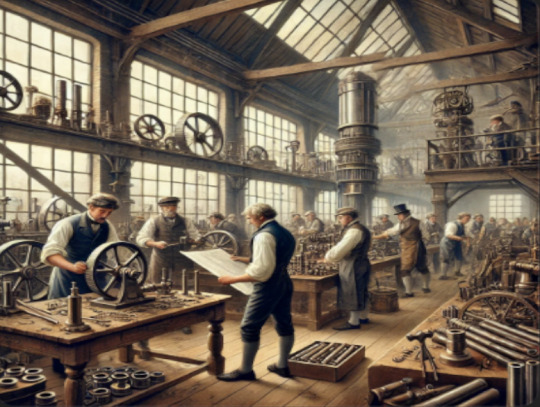Don't wanna be here? Send us removal request.
Text

Who Were the Machinists Behind Steam Engines?
Here are some notable figures and groups of machinists associated with steam engine development:
James Watt’s Workshop Machinists
James Watt (1736–1819) is one of the most famous names associated with steam engines, but his success depended heavily on skilled machinists.
Watt's partnership with Matthew Boulton (a manufacturing entrepreneur) allowed him to access the resources and machinists of the Soho Manufactory in Birmingham, England.
Machinists at Soho crafted and assembled the precision-engineered components of Watt's steam engines, such as cylinders, pistons, and valves.
John Wilkinson (1728–1808) - The "Iron Mad" Wilkinson
Wilkinson was a pioneering machinist and ironmaster known for developing precision boring machines that could create perfectly cylindrical holes in metal. This innovation was critical for producing steam engine cylinders with the tight tolerances required for efficiency.
His contributions enabled Watt to produce much more reliable steam engines.
Maudslay’s Machinists
Henry Maudslay (1771–1831) was a brilliant machinist and engineer who invented the screw-cutting lathe, allowing for standardized and precise components.
Maudslay trained a generation of machinists in his workshops, many of whom went on to revolutionize various industries:
Joseph Whitworth, who standardized threads.
James Nasmyth, who invented the steam hammer.
These machinists made it possible to build steam engines more efficiently and with interchangeable parts.
Machinists in Steam Engine Production
Workshops and Factories
Soho Foundry (Boulton & Watt's factory): This was one of the first factories designed for manufacturing steam engines at scale, employing skilled machinists.
Coalbrookdale Company: Early manufacturers of steam engine components, employing skilled craftsmen and machinists to shape iron.
Skills and Tools of the Era
Early machinists used tools like lathes, planers, and boring machines, often powered manually or by water.
They worked with cast iron, wrought iron, and later steel, hand-finishing parts to ensure they fit perfectly.
Precision tools and measuring instruments, such as micrometers and calipers, were developed and refined by machinists like Whitworth.
0 notes